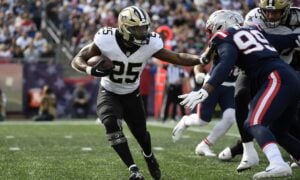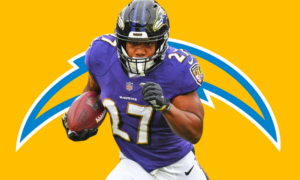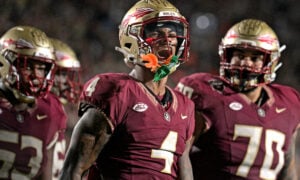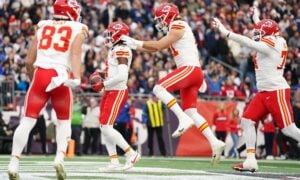The Unquestionable Need to Question
In the cover of the moon, the young sea turtle hatchling waits. The last five days have been spent digging itself out of its sandy nest, leaving the safety of cover below. As the group of siblings grows around him, one task is paramount: make it to the water. There is no guide, no parent, and no one leading as an example. The need to travel to the sea is genetically hardwired within them, a birth instinct individualized to their species.
[am4show have=’g1;’ guest_error=’sub_message’ user_error=’sub_message’ ]
I’ve often fantasized about what it would be like to travel back in time and learn about football in a fresh form. My ignorance has always been viewed as a strength, allowing me to ask questions without hesitation. If a two-year-old child’s two primary drives were to eat and sleep, the third would be to unabashedly ask questions. As we age, I have found that a fear to continue with the instinctual grows within many individuals.
As a young child develops the ability to speak and process, one word moves to the forefront of their vocabulary: the question “why?” The query is repeated day in and day out, and as such, the fundamentals of understanding are adopted. I like to think of this as the wisest time in our lives, a sweet spot in our development where we have yet to adopt tendencies that get in our own way limiting progress. It’s the instinctual need to ask questions which allow us to grow as individuals and as a society, so why do they become less frequent as we age?
Fantasy football has become a very tech-driven industry. Most days the greater extent of my research is done on very limited sites. Twitter has become a cornerstone for many, including myself, for the spread and absorption of information. The site has become a great medium to relay pieces of information about a player or team, however at most times, lacks the ability to portray proper context. It’s not that each individual who authors a limited tweet have intentions of misleading you, they just don’t have the space to finish every thought.
I do believe that some statistical information has more value than others, but I have yet to find any singular statistic that truly defines a player. We have to change the way we adopt information. In order to properly gain context from a statistic, we have to look at each individual statement as a question, rather than that of an answer, or gauge of success. To give an example of my intention, lets jump ahead in our timeline and use a statistic from the 2018 NFL season and break it down.
“Player X led the NFL in yards receiving totaling 1426.”
This seems like a simple statement, but what matters is not the statement itself but what you take away from it. So now we know that Player X is a good enough player to lead the NFL in receiving yardage, that’s hard to argue against. What questions do we need to ask to discover if leading the league is indicative of being ranked among the league’s top receivers. How many games did Player X play? Was he the only player among his top-yardage peers that played the full 16 games? Was the yardage attained by not only a volume of targets but by the talent of the individual? What defenses did he face? We have to keep questioning. Looking back at the originating statistical statement, I believe it might seem to be a little weak. Let’s make this a little more difficult.
“Of the 1450 yards Tailback X gained, only 14% were after contact.”
Ok, now we’re talking. We can safely assume that the player in question is good enough to run for 1450 yards, but the questions are already mounting in my head. The 203 yards after contact would indicate that Tailback X is not a tackle-breaker, and while that could certainly be indicative of that, we have to keep questioning. Was the player playing hurt, hindering his ability to fight through the force of a sure-handed tackler? Was the team one-dimensional with defenses keying on Player X forcing not only single breaks but also being tied up by two or more defenders? Was Player X one-dimensional himself, relying on long bursts after hitting the corner set by a successful offensive line?
If you were to look at any singular statistic, or even combinations of two or more, questions will always remain. Quite simply, any number cannot properly identify everything that happens on the field, as football is far too complex. Every success by one individual is reliant on the players surrounding him doing their job.
The release of the NFL Next Generation statistics do a great job of telling you something has happened. We can now search such things as yards of separation, live graphs of route trees, and quarterback successes by zone and depth. The addition of such databases is wonderful and seems like a playground for those looking to draw conclusions, but the toddler in me still refuses to cease being inquisitive.
Once again, I find myself asking how the data in front of me translates to the players I’m attempting to evaluate. If a wide receiver averaged 1.4 yards of separation at the catch point, why does that matter, and what does it mean in a predictive form? Offhand, I would question the throws; are they leading the receiver into open areas, or is the wide receiver adjusting to the throw and slowing down, or playing towards the boundary? Is the wide receiver hurt, or is the QB hurt, or is the play calling simply to blame?
Blind certainty is close-mindedness that amounts to imprisonment so total, prisoner doesn’t even know he’s locked up.
-David Foster Wallace— Adam Harstad (@AdamHarstad) May 1, 2015
If you happen to follow me on Twitter, you will notice I do not hold back my fondness for the work of Adam Harstad. Adam’s pinned tweet of the quote of David Foster Wallace has become a benchmark for my own analysis. The fantasy world has become a hot spot for theories of market exploitation on the backs of years of data. Smart minds have produced the works and processes of “The Late Round QB”, “Zero RB”, and many, many, more. While I certainly do not wish to take away from the value of great work in theory, I choose to question each process I read.
The dynasty timeline is seemingly infinite with all production from each player, and each grouping of players, being fluid year to year. The influx or removal of talent from the field on any given upcoming week can dramatically shift outlooks in production, and if this is the case, we have to remain flexible to change. A concrete stance on anything being the proper foundational process on how to build a dynasty team will always be found wanting, and the more popular that process becomes, an increase appears in it’s ability to be exploited.
While I believe that there is some merit to following the wisdom of the crowd, (the crowd tends to control trade longevity in the short term), fighting upstream and waiting for the correction can pay dividends in a large fashion. We all have bias, and whether we try to fight against it or not, largely determine our ability to react in a proper fashion. The growing hate of any given position in the NFL is largely unfounded. As we continue to grow as an industry, the best works will always be the process of talent evaluation. While it cannot be argued against that some skilled positional groupings have shown to portray display risk, we also need to understand how that equates to talent and the longevity of a player.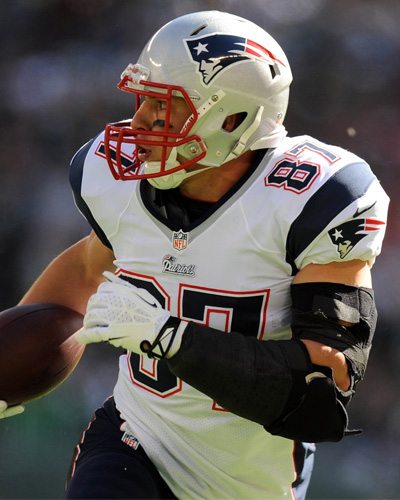 Fear can make us do some strange things.
Fear can make us do some strange things.
The recent failures of highly touted prospects have inserted a doubt into the standard processing of the tailback, and although that may be warranted, we also have to look forward for the coming of the correction. If we had the opportunity to look into the future when we were studying such players as Matt Forte, Ladainian Tomlinson, and LeSean McCoy, how much value would we place on them during our rookie drafts? There is no box we can fit any players into, with each coming with their own inherent risks and rewards.
My intention in this article is not to take away from the hard work of others. The advancement of the data driven analysis in the football world is growing by leaps and bounds, improving every day. If you could take away one thing from my ramblings, it is to embrace your genetically engrained predisposition to ask questions. We were born with innate instincts, which affect our behavior, both in what could be viewed as positive and negative fashions for advancement. As we grow and develop our individual processes for understanding, we are constantly fighting against what we wish to be true, and the truth itself. The unconscious defense mechanism of the ego can limit not only the questions we ask, but also the questions we don’t want to ask.
The true advancements in our industry will always be from the discussions on any given aspect of the NFL. The inquisitions into any article, theory or statistic should always be viewed as a positive. I ask these questions to better understand, and to ask questions with an improved merit in the future. My hope is that a love of a game, a game which I’ll never truly be able to understand in its entirety, creates an unending ladder of queries. If we as a community open our hearts and minds to that we do not, and cannot know, the possibilities of advancement are endless. Question that which you believe the most, and perhaps, just perhaps, your breakthroughs can become benchmarks.
[/am4show]
- Dynasty Trades: How to Trade in Volume - June 20, 2017
- The Unquestionable Need to Question - February 22, 2017







